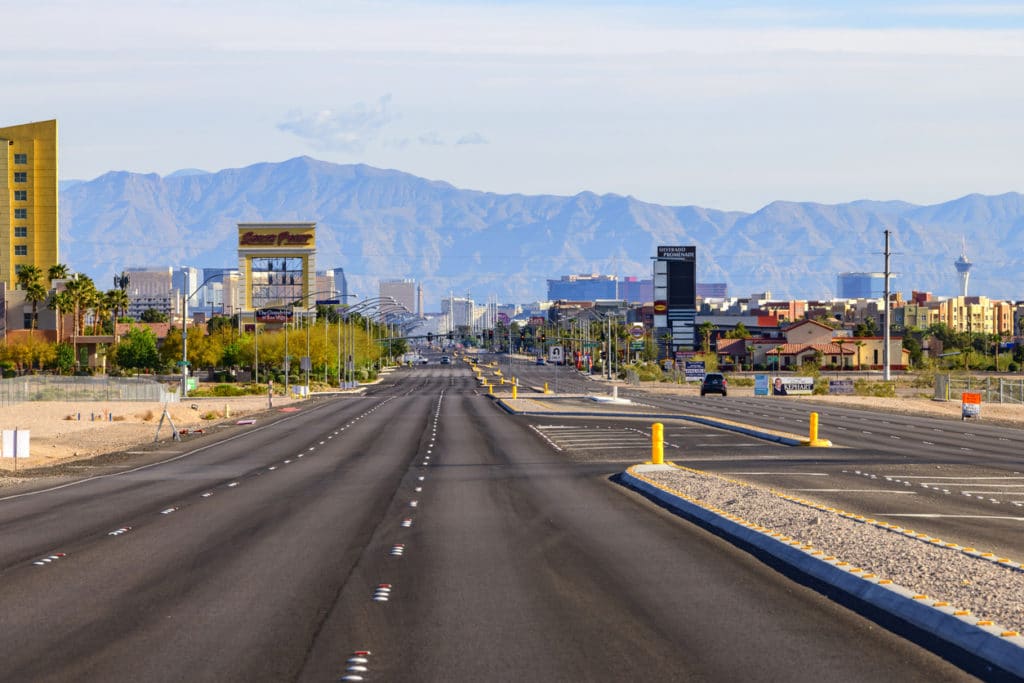
Most people driving on the road in Nevada have not had a driving test or even looked at a driver’s manual in years or even decades. It really is no wonder then that there are so many accidents on the road. Accidents most commonly occur in the large metropolis of Las Vegas, Henderson or Reno but of course, can happen anywhere. All Nevada towns and cities are governed by the various Nevada Revised Statutes that pertain to the “rules of the road”.
NRS 484B.250 has to do with drivers operating their vehicles while they approach or enter an intersection. Pretty much anyone driving, even for just a short distance will come across an intersection. Most drivers wing it when behind the wheel as they have not opened up a manual in quite some time. Because of that, it may not be a bad idea to refresh yourself on the various laws. Not only could it save you some money by being able to avoid a traffic ticket but it can also save you some time.
Getting a ticket and having to go to court is a time-consuming process that is sure to take you away from something more important like work. Missing work due to a court appearance only magnifies the cost. If your court date happens to be on a day off, then I am sure you can still figure out something better to do. If you find yourself in that situation then call us here at Ticket Busters. We’ll be able to save you some time and money by fighting your ticket. In any case, start reading up on the Rules of the Road and at the very least, you will probably get put to sleep right away.
This article will address NRS 484B.250. This is the Nevada Revised Statute mostly associated with ‘right of way’ laws. Even some high-profile names in Nevada have been cited for violation of this statute which not only generated some bad publicity but also a car wreck.

One of the more popular ways to be in violation of this law is failing to yield while making a left-hand turn through an intersection with a flashing yellow light. In this situation, one must be careful because turning on the yellow arrow means that there are cars heading in your direction. They have the green light so therefore the driver with the yellow needs to yield (ensure they can make the turn only without impacting the oncoming vehicles). Oftentimes, drivers forget this or do not properly judge the open space between the oncoming car and cause an accident. To be cited a ticket from law enforcement for violating NRS 484B.250 or failing to yield, a driver does not just have to be in a wreck, the driver making the turn can simply cause the other drivers to change their course of travel.
Now that we have a basic idea of this Nevada Statute, we can dig into what it actually says.
The first couple of details within the statute reads:
The driver of a vehicle approaching an intersection shall yield the right-of-way to a vehicle which has entered the intersection from a different highway.
When two vehicles enter an intersection from different highways at approximately the same time, the driver of the vehicle on the left shall yield the right-of-way to the vehicle on the right.
This one is very basic and seems to be a standard rule that most of us remember from our youth. The driver on the left has the right of way. If involved in a car collision the police on the scene will investigate this very important detail. By looking at the damage on the vehicles, including paint from both cars they will be able to figure out who was where and when. In most cases, the cars in a wreck will not be moved, but if they do, a trained traffic officer can easily figure out what happened.
Witnesses will also be asked to notate what they saw. If you ever find yourself in a situation like this, your best chance of reducing ticket costs and time is to contact a seasoned attorney that is schooled in traffic law. Ticket Busters has these types of professionals and can be reached via email, phone or walk in.
Detail number three from the statute reads:
“When two vehicles enter an intersection at approximately the same time, one vehicle traveling on a highway which ends at the intersection and the other vehicle traveling on a through highway, the driver of the vehicle on the highway which ends at the intersection shall yield the right-of-way to the other vehicle.”
If you are driving and hit an intersection that turns out to be a dead end then you must yield. If your only options are to make a left or right-hand turn (you cannot move forward because the street ends) then you must ensure the drivers going in the other directions that you need to merge into have the right of way. Like many traffic laws, it is common sense but it’s always good for a refresher so read the handbook when you have a chance.
The fourth detail of NRS 484B.250 has verbiage that involves traffic lights that are inoperable:
When a vehicle enters an intersection controlled by a traffic-control signal which is installed and has its vehicular signals uncovered, but is inoperative at the time the vehicle enters the intersection, the driver of the vehicle shall proceed as if a stop sign had been erected at each entrance to the intersection and shall stop at a clearly marked stop line or, if there is none, before entering the crosswalk on the near side of the intersection or, if there is none, at the point nearest the intersection where the driver has a view of approaching traffic on the through highway. After making such a stop, the driver shall proceed cautiously, yielding to vehicles which have previously completed a stop or are within the intersection.
Most drivers are hopefully aware that if a traffic light is not working then that intersection needs to be treated like a four-way stop. It sure can be a hassle when this type of situation arises because four-way stops are much slower than a green light.
In a busy time of day or high-traffic intersection, the stop sign method can really back up traffic and cause lots of frustration. Regardless, all drivers in that situation need to use the situation as a four-way stop which means that each driver stops before the crosswalk or stop line (usually denoted in white) and waits until the cars in the other sections of the intersection that were stopped prior have proceeded.
Drivers must come to a complete stop and simply wait their turn. When traffic is backed up and frustrations are at their peak, some inpatient drivers will follow the car in front of them without waiting for their turn. By doing so, they are acting as if there is a green light telling them to proceed instead of following the law. Not only is this dangerous but if seen by a police officer you will get a ticket.
The last detail to the NRS is similar to other Rules of the Road which state that if there is an official vehicle on the roadway then they get the right of way:
Except as otherwise provided in subsection 4, this section does not apply at intersections controlled by official traffic-control devices or to vehicles approaching each other from opposite directions, when the driver of one of the vehicles is intending to or is making a left turn.
So, if the traffic lights are out but there is a different kind of traffic control device then all drivers must be obedient to them. If an emergency vehicle is traveling with lights blazing then they must be yielded to.
One common driving situation that is scary for many people and not specifically addressed in the Nevada Revised Statutes is those pertaining to roundabouts. Instead of using the common intersection with traffic lights, many communities are building roundabouts for less cost with the idea that they keep the flow of traffic moving.
They’ve been around for many years in the areas of Summerlin in western Las Vegas and can also be found in certain parts near Southern Highlands and Henderson. These can be a major matter of concern for drivers especially if they are unclear as to how to navigate them.
The small Virgin Valley of Mesquite even has these contraptions which are often referred to as “devilish circles”. The interchange from Interstate 15 to Falcon Ridge has one specifically. When confronted with a roundabout, who is expected to yield to who? Is the driver who is already in the roundabout in the right of way or is the new driver about to enter it?
As confusing as it might be at the time for the driver (with cars seemingly coming from all directions), the answer is pretty basic. When entering a roundabout, the driver who is approaching has a yield sign and must proceed with caution by slowing down or coming to a complete stop until it is safe to enter the traffic circle. From the way the traffic circles are built, the cars that are already there do not need to slow down or stop for vehicles waiting to enter in. And remember the age-old rule that the car on the left has the right of way.
If you get a traffic ticket for failing to yield or are found in violation of NRS 484B.250 please let us know at Ticket Busters and our professional law staff will assist you with easing the process.


